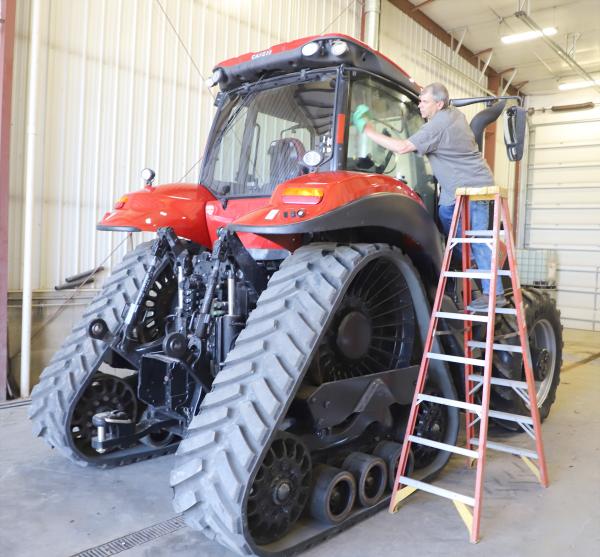
Most people have experienced the agonizing pain of leg cramps, the sudden and involuntary contraction of a muscle. Charles Mast knows the feeling too well. He put up with cramps and spasms in the back of his legs for months recently. Then, he got hit with the mother-of-all-cramps that changed his life.
“It was the worst pain I’ve ever had from cramps,” Charles recalled vividly of the day when he arrived home and simply got out of his truck. “I could not get rid of the pain. I could not stand up. I had all I could do to keep from passing out.”
From that day forward, the most minor activity would set off cramping in Charles’ legs, including taking off his shoes after work as a detailer at Selby Implement.
“From then on trying to do my job got to be more difficult because I am climbing up and down ladders on combines and other machinery all day. Any little bit of pressure on the back of my legs would bring on the cramps and spams,” said the 57-year-old. “I am not that old yet to be having these kind of problems.”
Charles reduced his activity as much as possible and began taking aspirin regularly for the pain. He wanted to address the pain’s source but could not find any help.
After several months he did find help during an unrelated visit to the Blessing Health Center 4800 Maine. That’s when Charles saw the office of Blessing Physician Services chiropractors Wes Creech and Erik Nothold. He stopped in to see if he could talk with someone about his symptoms.
That brief encounter lead to appointments with Dr. Nothold.
“Whatever he was doing was making me feel 100 percent better, even before I left the office,” Charles stated. “I went four times, and I am back to doing things I had not been able do for six months. I have not had any cramps or spasms in the back of my legs at all. I am back to normal.”
Dr. Nothold determined the source of Charles’ suffering was a condition called lumbar stenosis.
“Lumbar stenosis occurs when there is a narrowing or hardening of the spine in the lower back,” the doctor said. “A number of causes can lead to lumbar stenosis, it is most commonly due to damage to and changes in the spine caused by arthritis.”
“I treated him with Flexion-distraction, which involves decompressing the spine and applying motion to the segments which were restricted or fixated due to the stenosis,” Dr. Nothold explained. “We also utilized Active Release Technique, or ART, by working on the soft tissues or tightened muscle tissue around the injury which in turn increases flexibility and decrease pain.”
Charles also received from Dr. Nothold a home exercise program consisting of specific back, hip and leg stretches.
On his first visit to Dr. Nothold, Charles had to take the elevator to the second floor office instead of the 28-step staircase at the Blessing Health Center 4800 Maine.
“If I took the stairs, my legs were angry with me by the time I got to the top,” he described. “The last time I went there I jogged up the stairs. My legs didn’t even quiver.”
Learn more about the Blessing Physician Services chiropractic team.
